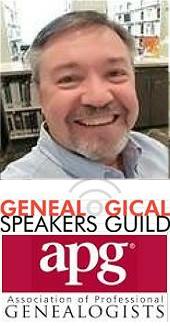|
 Unique Identity Unique Identity
by Robert M. Wilbanks IV, B.A.
Chief Genealogist & Historian, C.S.A.
genealogy@arizonascots.com
In the pursuit of their heritage all too often genealogists may tend to gloss over the uniqueness of each ancestor. It is a bit ironic. The main idea of researching the family history is the discovery of the individual uniqueness and story of our ancestor that we are chasing. Yet, in actuality, it isn’t unusual for genealogists to get so caught up in the research, that they quickly pass over the ancestors interesting uniqueness and story, and instead get more involved in the exciting frenzied pursuit for the next ancestor.
While I certainly want to encourage taking the time to ponder your ancestors’ unique identity for personal understanding and enjoyment, here I am actually going to explain the importance of that unique identity from a research perspective. Understanding fully the uniqueness of your ancestor’s physical description, character and personality traits, skills, education, involvement in the community, profession, socio-economic status, and more, can actually aid in the research for an ancestor’s parents and family connections. Connecting your ancestor to the wrong family can easily happen when these certain unique individual traits are not taken into account.
For example, a miner in Arizona in the 1880s who states his place of birth as Scotland is more likely to come from a mining town in Scotland rather than an agricultural community or a manufacturing town. Thus, helping you to focus your continued research.
This is more significant when you are researching an ancestor with an extremely common name. First, how do you recognize when there are two people of the same name, instead of seeing them as one person doing all these humanly impossible things? Secondly, how do you differentiate persons, applying the right events, family connections, etc., to the correct individual of the same name? Unfortunately, less experienced genealogists are highly likely to compare two persons of the same name and usually combine them as one person solely based upon their estimated date of birth being the same.
Let me give you a fictitious example of how you should take into account and correctly apply these personal characteristics to place your ancestor in the correct time, place and family. Let’s say your ancestor Kenneth Ferguson is the eldest son of a Duncan Ferguson, aged 45 in 1881 (thus born about 1836+/-), who is a 5 foot 6 inch red haired shopkeeper in Illinois originally from Perthshire, but your research leads to three Duncan Fergusons of about the same birthdate in Perthshire. One is an illiterate farmer, 5 foot 9 inches, red hair, in the town of Methven, the son of Ewen. The second is a black haired son of a notable barrister named Alexander in the City of Perth. The third is a 5 foot 6 inch red haired son of a shopkeeper named Kenneth in the village of Plockton. Once you take into account the personal details of the Duncan Ferguson in Illinois, it is fairly easy to see that he is probably the son of Kenneth the shopkeeper in Plockton. They have the same occupation, his description is the same, and Duncan in Illinois names his first son Kenneth, presumably after his father.
It is often these little details of the individual uniqueness of an ancestor that can be the most significant in correctly identifying parentage and other family connections. So, it is very important, not only to utilize these details, but to also actively find them and take note of them in the various records you find for your ancestor. It doesn’t require extra effort in research to find these details. These tidbits of personality are already in the records you are making the effort to find. It is merely a matter of you to make note of these individuality traits, and not solely get focused merely on the date and place of birth, marriage and death in those records. Look for the unique details and add it to the story of your ancestor. Give your ancestors the unique personality and story that they deserve.
This is another of a series of articles in which I show you the basics of searching for your family history, discussing the use of family records, public records, and online resources nationally and internationally, etc. The previous articles are now available on the Genealogy Section of this website. See “Genealogy” in the menu options at the top of the web page.
|